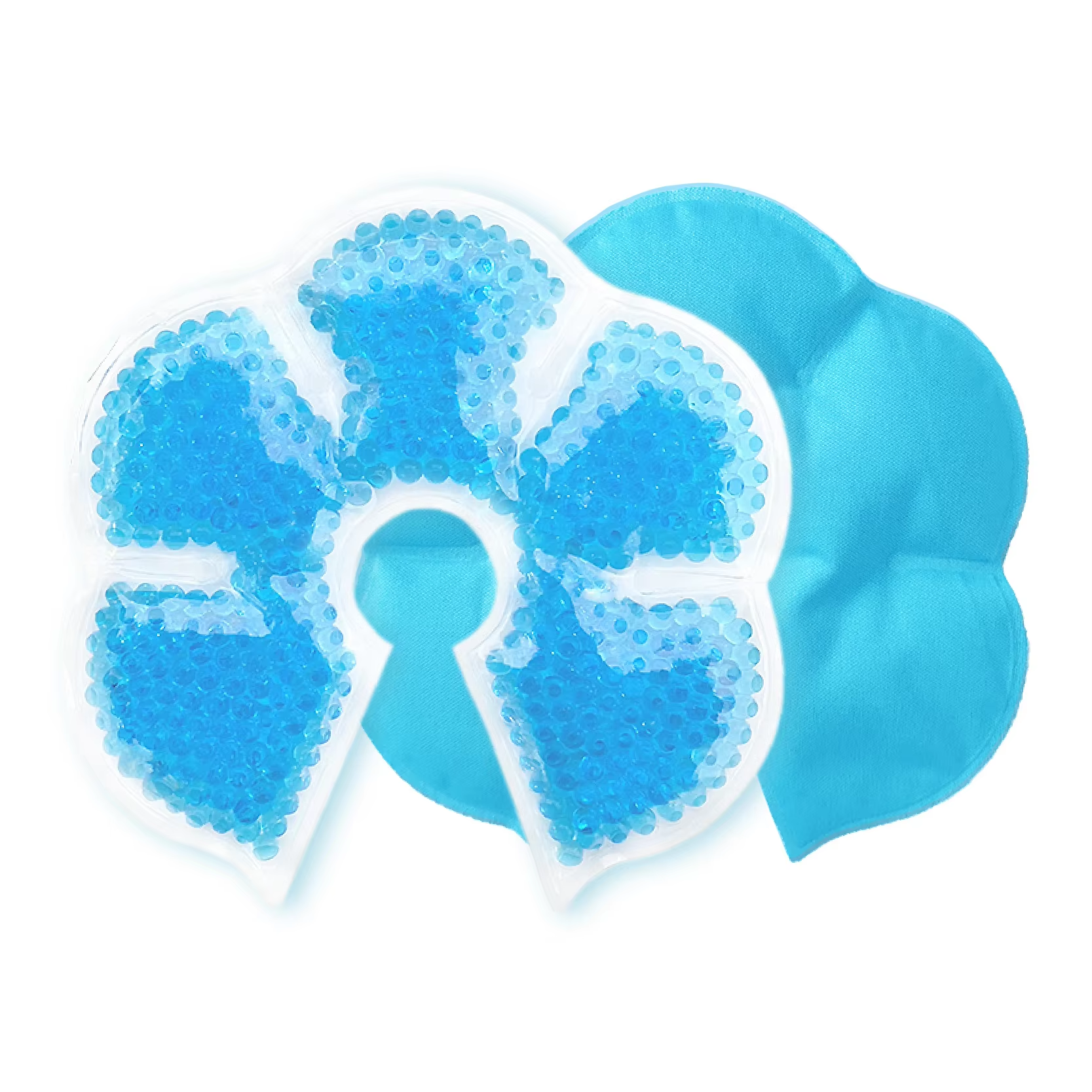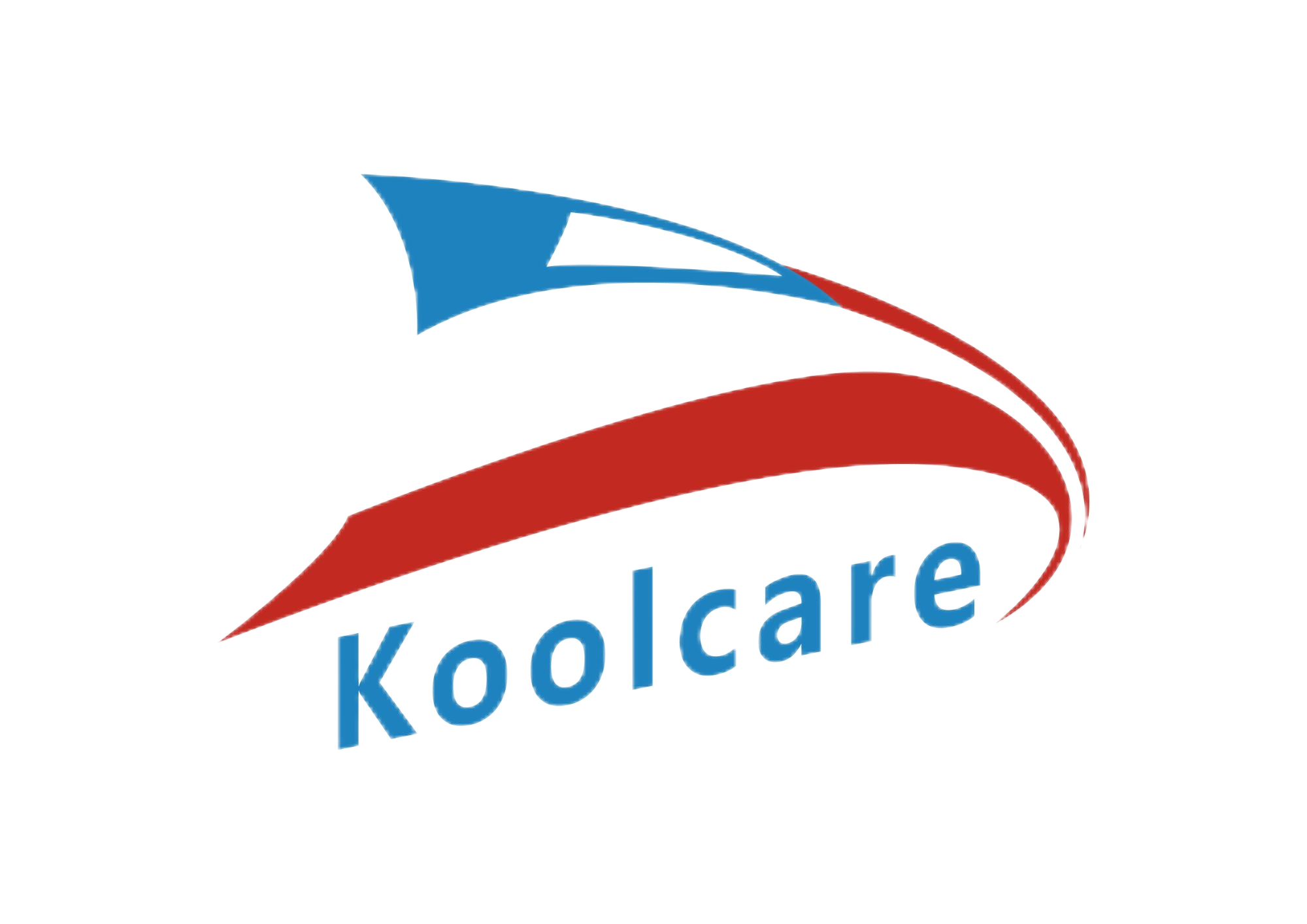ทำความเข้าใจเกี่ยวกับมาตรฐานความปลอดภัยสำหรับคุณแม่และเด็ก สินค้า
ความปลอดภัยเป็นสิ่งสำคัญในการเลือกผลิตภัณฑ์สำหรับคุณแม่และทารก การใช้วัสดุที่ไม่มีพิษ เช่น ฝ้ายออร์แกนิกและพลาสติกที่ไม่มี BPA ในของใช้สำหรับเด็ก เป็นสิ่งสำคัญสำหรับผู้ปกครองหลายคนที่ต้องการหลีกเลี่ยงสารเคมีที่เป็นอันตราย วัสดุเหล่านี้เหมาะอย่างยิ่งสำหรับเด็กทารก เนื่องจากช่วยลดความเสี่ยงของการแพ้และการไวต่อสารเคมี นอกจากนี้ วัสดุที่ยั่งยืน เช่น เส้นใยรีไซเคิล ก็มีความปลอดภัยและสร้างผลกระทบเชิงบวกต่อการอนุรักษ์สิ่งแวดล้อม รายงานที่เผยแพร่ในวารสาร Pediatrics เกี่ยวกับประโยชน์ด้านสุขภาพที่อาจเกิดขึ้นจากการใช้วัสดุที่ไม่มีพิษในเปลและของเล่น เผยว่าสิ่งเหล่านี้สามารถช่วยลดความน่าจะเป็นของการเกิดความล่าช้าในการพัฒนาเนื่องจากการสัมผัสสารเคมีพิษในระยะแรกเริ่มและเป็นเวลานาน
วัสดุที่ไม่เป็นพิษที่ควรให้ความสำคัญในอุปกรณ์สำหรับเด็ก
ไม่ใช่เพียงแค่กระแสนิยม แต่การเลือกอุปกรณ์สำหรับเด็กที่ทำจากวัสดุที่ไม่มีสารพิษเป็นสิ่งจำเป็นสำหรับสุขภาพของลูกน้อยของคุณ เช่น ฝ้ายออร์แกนิกซึ่งผลิตโดยไม่ใช้ยาฆ่าแมลงและสารเคมีที่เป็นอันตราย จึงเหมาะสำหรับผ้าห่มและเครื่องนอนของเด็ก นอกจากนี้ เครื่องเล่นที่ช่วยลดการหลั่งสารเคมีทำจากพลาสติกที่ไม่มี BPA ซึ่งสำคัญมากสำหรับของเล่นและผลิตภัณฑ์สำหรับเด็ก และไม่ควรมีสารรบกวนระบบฮอร์โมนที่เป็นที่รู้จัก วัสดุสีเขียว เช่น เส้นใยรีไซเคิล ไม่เพียงแต่ช่วยให้ทารกปลอดภัย แต่ยังเป็นมิตรต่อโลกอีกด้วย การศึกษาแสดงให้เห็นว่าการใช้วัสดุที่ไม่มีสารพิษสามารถลดความกังวลเกี่ยวกับสุขภาพในเด็กได้อย่างมาก ทำให้เป็นผลิตภัณฑ์ที่สำคัญมาก
สารเคมีที่พบบ่อยและควรหลีกเลี่ยงในสินค้าสำหรับคุณแม่
ผลิตภัณฑ์สำหรับคุณแม่หลายชนิดมีสารเคมีพิษ เช่น ฟทาเลตและสารกันไฟลาม — ซึ่งไม่ดีทั้งต่อคุณและโลก ฟธาเลตซึ่งถูกดูดซึมได้ง่ายโดยพลาสติกและไวนิล สามารถรบกวนการทำงานของฮอร์โมนและมีความเกี่ยวข้องกับปัญหาการพัฒนาในเด็กทารก สตรีตั้งครรภ์สวมใส่สารกันไฟลามที่เป็นพิษ — และอาจมีผลข้างเคียงที่น่ากลัว สตรีตั้งครรภ์สวมใส่สารกันไฟลามที่เป็นพิษ — พร้อมผลข้างเคียงที่อาจเกิดขึ้นอย่างร้ายแรง อ่านเพิ่มเติม สารกันไฟลามในเครื่องแต่งกายและผ้าห่มสำหรับคุณแม่อาจทำให้เกิดปัญหาทางระบบหายใจและปัญหาสุขภาพอื่น ๆ อ่านเพิ่มเติม ความคิดเห็นของผู้เชี่ยวชาญและการวิจัย รวมถึงบางส่วนจาก Environmental Working Group ชี้ให้เห็นว่าสารเหล่านี้สามารถทำอันตรายทั้งต่อแม่และลูกน้อยของพวกเธอ ความปลอดภัยมาก่อน เมื่อค้นหาหมอนนอน ควรสังเกตใบรับรองหรือป้ายกำกับที่ระบุว่าผลิตภัณฑ์นั้นปราศจากสารเคมีพิษเหล่านี้
คุณสมบัติการออกแบบที่ส่งเสริมความปลอดภัยของทารก
ในอุปกรณ์สำหรับเด็กทารก มีข้อกำหนดด้านการออกแบบบางประการที่ช่วยรับประกันความปลอดภัยของทารก ลักษณะสำคัญ เช่น มุมที่มนและไม่มีชิ้นส่วนเล็ก ๆ เป็นสิ่งจำเป็นเพื่อหลีกเลี่ยงการบาดเจ็บและการหายใจติดขัด มาตรฐานความปลอดภัยของผลิตภัณฑ์ เช่น มาตรฐานที่กำหนดโดย ASTM International มีความสำคัญอย่างมากในการออกแบบผลิตภัณฑ์ เนื่องจากมีมาตรฐานความปลอดภัยที่เข้มงวด นี่คือองค์ประกอบการออกแบบที่ผู้เชี่ยวชาญบางคนกล่าวว่าพ่อแม่ควรให้ความสำคัญเมื่อเลือกซื้ออุปกรณ์ เช่น เตียงเด็ก เครื่องเข็น และเก้าอี้ทานข้าวสำหรับเด็ก องค์ประกอบการออกแบบเหล่านี้มีความสำคัญอย่างยิ่งต่อการเติบโตที่ปลอดภัยและแข็งแรงของทารก
การแปลฉลาก: OEKO-TEX, GOTS และ CPSIA อธิบาย
การเรียนรู้เพิ่มเติมเกี่ยวกับฉลากต่างๆ เช่น OEKO-TEX, GOTS และ CPSIA สามารถช่วยให้คุณพ่อคุณแม่ตัดสินใจได้ดีที่สุดเมื่อซื้อของสำหรับเด็ก เหล่าใบรับรองเหล่านี้แสดงถึงมาตรฐานที่สูงในเรื่องความปลอดภัยและการยั่งยืนของผลิตภัณฑ์ OEKO-TEX เป็นมาตรฐานที่จำกัดการใช้สารเคมีที่ทราบหรือสงสัยว่าเป็นอันตรายต่อสุขภาพ เช่น ฟอร์มาลดีไฮด์ เหล็กหนัก สารก่อกวนต่อมไร้ท่อ หรือสารก่อภูมิแพ้และระคายเคือง อันนี้มอบความสบายใจให้กับผู้ปกครองเกี่ยวกับเนื้อผ้าที่สัมผัสกับผิวหนังบอบบางของลูกน้อย GOTS (Global Organic Textile Standard) มุ่งเน้นไปที่เส้นใยธรรมชาติและกระบวนการผลิตที่เป็นมิตรต่อสิ่งแวดล้อม ส่วน CPSIA (Consumer Product Safety Improvement Act) ยังตรวจสอบให้แน่ใจว่าสินค้าสำหรับเด็กที่ขายในสหรัฐอเมริกาปฏิบัติตามมาตรฐานความปลอดภัย รวมถึงปริมาณตะกั่วและโฟสเฟตสูงสุด เหล่าใบรับรองเหล่านี้เป็นเครื่องยืนยันที่แข็งแกร่งมากพอที่จะทำให้ผู้ปกครองที่ห่วงใยเรื่องความปลอดภัยและความเป็นมิตรต่อสิ่งแวดล้อมต้องพิจารณา ตัวอย่างเช่น เส้นใบที่ได้รับการรับรองจาก OEKO-TEX จะถูกตรวจสอบหาสารที่อาจเป็นอันตรายต่อสุขภาพมนุษย์ นอกจากนี้มาตรฐานเหล่านี้ไม่เพียงแต่รับประกันความปลอดภัยของหน้ากากป้องกัน แต่ยังสร้างบรรยากาศของการผลิตที่เป็นมิตรต่อสิ่งแวดล้อม
การรับรองจาก FDA หมายถึงอะไรสำหรับผลิตภัณฑ์สำหรับการให้นมบุตร
เป็นสิ่งสำคัญที่ต้องพิจารณาหาการรับรองจาก FDA เมื่อเลือกชิ้นส่วนสำหรับการให้นม เพราะนั่นคือการันตีว่าสินค้าเหล่านั้นผ่านเกณฑ์ด้านความปลอดภัยและความมีประสิทธิภาพอย่างเข้มงวด สินค้าเช่นเครื่องสูบน้ำนมและขวดนมจะถูกทดสอบอย่างละเอียดเพื่อให้มั่นใจว่าสะอาดและทำงานได้ตามที่คาดหวัง การตรวจสอบในระดับนี้หมายความว่าของใช้ที่สำคัญสำหรับลูกน้อยของคุณจะไม่เพียงแต่ปลอดภัย แต่ยังน่าเชื่อถือสำหรับการใช้งานประจำวัน! เช่น กระบวนการนี้มักจะรวมถึงการทดสอบสารพิษที่อาจเกิดขึ้นและการทำงานจริงในชีวิตประจำวัน นอกจากนี้ หลักฐานจากแหล่งที่มาหลากหลายสนับสนุนว่าความปลอดภัยและความน่าเชื่อถือของผลิตภัณฑ์ที่ได้รับการรับรองจาก FDA มีมากกว่าผลิตภัณฑ์ที่ไม่ได้รับการรับรอง ซึ่งมอบความมั่นใจเพิ่มเติมให้กับพ่อแม่ที่มีความกังวลเมื่อเทียบกับผลิตภัณฑ์ที่ไม่ได้มาตรฐาน
การยอมรับใบรับรองความปลอดภัยที่น่าเชื่อถือในระดับโลก
ใบรับรองความปลอดภัยที่ไม่ใช่ของสหรัฐฯ เช่น EN71, AS/NZS มีความสำคัญสำหรับพ่อแม่เมื่อพิจารณาสินค้าสำหรับเด็กจากต่างประเทศ EN71 กำหนดเกี่ยวกับความปลอดภัยของของเล่นในยุโรปและรับประกันว่าสินค้าไม่มีสารเคมีหรือชิ้นส่วนที่เป็นอันตราย ในขณะที่ AS/NZS เฉพาะเจาะจงถึงเฟอร์นิเจอร์ในห้องเด็กและสินค้าสำหรับเด็กในออสเตรเลียและนิวซีแลนด์ การรับรองความปลอดภัยของผลิตภัณฑ์ การรับรองระดับโลกให้แบบแผนความน่าเชื่อถือระหว่างประเทศแสดงให้เห็นว่าผลิตภัณฑ์ผ่านการทดสอบความปลอดภัยหลากหลายมาอย่างประสบความสำเร็จ เมื่อประเมินผลิตภัณฑ์จากต่างประเทศ พ่อแม่ควรมองหาตราประทับการรับรองเหล่านี้ เพราะมันแสดงให้เห็นว่าผลิตภัณฑ์ปฏิบัติตามมาตรฐานที่เข้มงวด และได้รับการพิสูจน์แล้วว่า การรับรองที่ได้รับการยอมรับในระดับโลกเพิ่มมูลค่ามหาศาลให้กับความปลอดภัยของผลิตภัณฑ์ ทำให้ผู้บริโภคทั่วไปมั่นใจมากขึ้น
การเลือกผลิตภัณฑ์สำหรับคุณแม่และเด็กที่หลากหลายเพื่อใช้งานได้นาน
สินค้าในห้องเด็กที่มีฟังก์ชันหลายอย่างและเติบโตไปพร้อมกับเด็ก
ของใช้ในห้องเด็กอเนกประสงค์ เช่น เตียงนอนเด็กปรับได้และโต๊ะเปลี่ยนผ้าอ้อม ให้พื้นฐานสำหรับห้องใหม่ของลูกน้อยของคุณ สินค้านี้ออกแบบมาเพื่อเติบโตและเปลี่ยนแปลงไปพร้อมกับลูกของคุณจากทารกแรกเกิดจนถึงวัยหัดเดิน เช่น เตียงนอนเด็กปรับได้ซึ่งสามารถเติบโตไปกับลูกของคุณเป็นเตียงนอนเด็กวัยหัดเดินหรือเตียงขนาดเต็ม คุณสามารถประหยัดได้มากโดยไม่ต้องซื้อเตียงหลายชุดในอนาคต โต๊ะเปลี่ยนผ้าอ้อมที่สามารถแปลงเป็นตู้เก็บเก้าอี้เมื่อคุณเลิกใช้ผ้าอ้อมแล้ว การลงทุนในสินค้าที่ทนทานเหล่านี้ซึ่งออกแบบมาเพื่อใช้งานยาวนาน ลดขยะ และเพิ่มประสิทธิภาพในการจัดเตรียมห้องเด็กของคุณ มีความคุ้มค่า ฟังก์ชันการทำงาน - พ่อแม่มักจะชี้ให้เห็นว่า สำหรับพวกเขาแล้ว หลักฐานอยู่ที่การกระทำ กล่าวคือ สิ่งที่เพื่อนและครอบครัวดูเหมือนจะชอบและใช้งานภายในห้องเด็กของพวกเขาในระยะยาวคือ มันทำงานตามที่บอกไว้และมีความยืดหยุ่นในการสนับสนุนผู้ใช้เป็นเวลาหลายปี
อุปกรณ์ปรับเปลี่ยนได้: จากทารกแรกเกิดถึงวัยเด็กเล็ก
สินค้าที่สามารถปรับเปลี่ยนได้ เช่น เก้าอี้เด็กในรถและรถเข็น เป็นตัวเลือกที่คุ้มค่าเพราะสามารถเติบโตไปพร้อมกับเด็กในหลายช่วงวัย ผลิตภัณฑ์เหล่านี้มาพร้อมกับองค์ประกอบที่สามารถปรับแต่งได้ซึ่งสนับสนุนความปลอดภัยของลูกน้อยที่กำลังเติบโตและความสะดวกสบายของผู้โดยสาร ตัวอย่างเช่น รถเข็นอาจมีการจัดเรียงที่นั่งหลายแบบเพื่อรองรับทารก เด็กเล็ก และเด็กโต และเก้าอี้นิรภัยในรถยนต์อาจมีสายรัดที่ปรับได้เพื่อให้แนบสนิทในทุกขั้นตอนของการพัฒนา การศึกษาแสดงให้เห็นว่าอุปกรณ์ที่สามารถปรับเปลี่ยนได้ช่วยให้คุณใช้เงินน้อยลง ซึ่งไม่เพียงแต่ดีต่อโลก (เนื่องจากมีสิ่งของถูกผลิตออกมาน้อยลง) แต่ยังดีต่อกระเป๋าสตางค์ของคุณ อีกด้วย สินค้าเหล่านี้มีความหลากหลายมากจนผู้ปกครองสามารถคาดหวังว่าจะใช้งานได้นานพอที่จะเป็นส่วนหนึ่งของการเลี้ยงลูกอย่างใส่ใจ
วัสดุที่ทนทานซึ่งสามารถทนต่อจุดสำคัญของการพัฒนา
การเลือกใช้ผลิตภัณฑ์สำหรับเด็กที่มีความทนทานจะรับประกันความปลอดภัยของลูกน้อยของคุณ และยังสามารถใช้งานได้นาน อายุไม้แข็งและพลาสติกคุณภาพดีเป็นวัสดุที่ดีที่สุด เพราะจะคงทนต่อการกระแทกและการใช้งานหนักในช่วงพัฒนาการเริ่มแรก คุณภาพในการสร้างผลิตภัณฑ์เหล่านี้เพิ่มอีกชั้นของการปลอดภัย โดยลดความเสี่ยงจากอันตรายที่พบในผลิตภัณฑ์ที่ทำจากวัสดุบางๆ และเนื่องจากออกแบบให้มีความทนทาน จึงมีอายุการใช้งานยาวนานกว่า เพราะจะไม่สึกหรอจากการใช้งานหนักอย่างต่อเนื่อง นอกจากนี้ยังแข็งแรงและน่าเชื่อถือกว่าคู่แข่งของเรา และยังเป็นมิตรต่อสิ่งแวดล้อมมากขึ้น เมื่อพิจารณาถึงวัสดุแล้ว จะเห็นว่าวัสดุเหล่านี้เป็นวัสดุที่ปลอดภัยและยั่งยืนที่สุดในตลาด ซึ่งชัดเจนว่าเป็นทางเลือกที่ชาญฉลาดสำหรับผู้ปกครองที่ห่วงใยเรื่องความปลอดภัยและความยั่งยืนในระยะยาว
การประเมินแบรนด์ผ่านมุมมองของผู้ปกครองจริง
วิธีการสังเกตบทวิจารณ์จากลูกค้าที่แท้จริง
มีความคิดเห็นมากมายในตลาด การเลือกปฏิกิริยาของลูกค้าที่แท้จริงจากปฏิกิริยาปลอมเป็นสิ่งที่ทำให้แตกต่างอย่างมาก บทวิจารณ์จากสถาบันมักจะมีโทนที่ปานกลาง พูดถึงประสบการณ์เฉพาะเกี่ยวกับผลิตภัณฑ์ และใช้วามเข้าใจที่สม่ำเสมอในบทวิจารณ์ ในทางกลับกัน สิ่งที่คุณจะพบคือหลักฐานที่น่าเชื่อถือของการพยายามหลอกลวงผ่านบทวิจารณ์ปลอมที่ดูเหมือนจะเป็นบวกที่สุด ซึ่งสามารถอธิบายได้เพียงว่าพวกมันบวกเกินไป เข้าใจผิดได้ง่าย และซ้ำซาก การควบคุมคุณภาพมีความสำคัญ ดังนั้นคะแนนจากหลายแพลตฟอร์ม (แทนที่จะเป็นคะแนนที่กำหนดเองจากแหล่งเดียว) คือกุญแจสำคัญ แบรนด์ที่ทำผลงานได้ดีที่สุดตอบโจทย์เกณฑ์การใช้งานและความปลอดภัยที่สำคัญ ทำให้การใช้งานทั้งง่ายและสนุก
ตัวชี้วัดประสิทธิภาพสำหรับผ้าอ้อม เครื่องบรรทุก และอุปกรณ์ให้อาหาร
ในยุคที่ตลาดเต็มไปด้วยรีวิวจำนวนมาก ทักษะในการแยกแยะซึ่งไม่มีข้อโต้แย้งกลายเป็นสิ่งสำคัญในการตัดสินว่าอะไรคือความคิดเห็นของลูกค้าที่แท้จริงและอะไรที่ไม่ใช่ รีวิวที่แท้จริงมักจะแสดงโทนเสียง มักจะอธิบายประสบการณ์การใช้งานสินค้า และมีภาษาที่สอดคล้องกันระหว่างรีวิวที่แท้จริง ในทางกลับกัน รีวิวปลอมอาจมีความเชิงบวกมากเกินไป ไม่มีรายละเอียดมากพอ หรือพูดคุยมากเกินไป นั่นคือเหตุผลที่เราจำเป็นต้องเข้าถึงและค้นหารีวิวจากหลายแหล่ง เพื่อให้เราได้รับประโยชน์ทั้งจากความคุ้นเคยของแบรนด์ที่เรารู้จักและความตื่นเต้นของสิ่งใหม่ มอบตัวเลือกที่หลากหลายสำหรับการเลี้ยงลูกในแบบที่เหมาะสมที่สุดสำหรับเรา
การบาลานซ์ระหว่างแบรนด์ยอดนิยมกับผลิตภัณฑ์เฉพาะกลุ่มที่นวัตกรรม
การหาจุดสมดุลที่เหมาะสมระหว่างสินค้าสำหรับเด็กที่เป็นที่นิยมและเฉพาะทางสามารถสร้างปาฏิหาริย์ได้ แบรนด์ที่เป็นที่รู้จักทั่วไปมักหมายถึงความน่าเชื่อถือ และไม่มีอะไรที่จะทำให้ผู้ปกครองสบายใจไปกว่านั้น อีกด้านหนึ่ง นักนวัตกรรมใหม่ในกลุ่มเฉพาะทางสามารถนำเสนอวิธีแก้ปัญหาใหม่ๆ ที่เน้นสิ่งที่กำลังทำเพื่อเราและพัฒนาฟังก์ชันให้ดียิ่งขึ้น โดยมีสินค้าหลากหลายตั้งแต่ดอกไม้ ผลไม้ ไปจนถึงไอศกรีม ซึ่งทำให้เรามักหลงใหลในช่วงเวลาแห่งความสุขและความทรงจำกับลูกๆ ของคุณ และหวนระลึกถึงความงามของความรักครั้งแรกของคุณ

การปรับผลิตภัณฑ์สำหรับคุณแม่และทารกกับไลฟ์สไตล์ของคุณ
สินค้าในห้องเด็กที่มีฟังก์ชันหลายอย่างและเติบโตไปพร้อมกับเด็ก
เมื่อเราเลือกสิ่งจำเป็นสำหรับการเลี้ยงลูก จะขึ้นอยู่กับสภาพแวดล้อมของเราและประเภทของผลิตภัณฑ์ที่เรามีความต้องการ พ่อแม่ในเมืองมักจะเลือกใช้สินค้าที่ประหยัดพื้นที่ สะดวกต่อการพกพา เช่น เก้าอี้รถเด็กพับได้และเปลนอนขนาดกะทัดรัดที่สามารถเคลื่อนย้ายได้ง่ายในอพาร์ตเมนต์เล็กๆ ในทางกลับกัน พ่อแม่ในเมืองอาจชอบสินค้าที่แข็งแรงและออกแบบมาสำหรับบ้านใหญ่และพื้นผิวหลากหลาย พ่อแม่ในเมืองและชนบทมีความชอบที่แตกต่างกันชัดเจน ซึ่งแสดงให้เห็นว่าไลฟ์สไตล์มีผลต่อการตัดสินใจซื้ออย่างไร ทุกสภาพแวดล้อมมีความต้องการและความจำเป็นเฉพาะตัว อธิบายถึงความมุ่งมั่นในการค้นหาและเลือกผลิตภัณฑ์ที่เหมาะสมกับสภาพแวดล้อม และที่จะรับประกันความปลอดภัยและความสะดวกสบายของแม่และเด็ก
วิธีแก้ปัญหาแบบกะทัดรัดสำหรับพื้นที่อยู่อาศัยขนาดเล็ก
พื้นที่อาจเป็นปัญหาใหญ่สำหรับพวกเขา โดยเฉพาะอย่างยิ่งครอบครัวที่อาศัยอยู่ในบ้านขนาดเล็กหรือในเมือง หากการใช้ชีวิตแบบไมโครหรือขนาดจิ๋วทำให้คุณรู้สึกเจ็บปวด ฉันเดาว่าน่าจะเพราะคุณยังไม่เคยเห็นความน่ารักแบบพอดีๆ ในอุปกรณ์สำหรับเด็กที่ประหยัดพื้นที่ ทำได้จริง และยังผ่านเกณฑ์ด้านความปลอดภัยโดยไม่ตัด corners นอกจากนี้ด้วยคุณภาพของระบบสมัยใหม่ อุปกรณ์เหล่านี้ยังสามารถเสริมความสวยงามให้กับบ้านที่วุ่นวายของคุณได้อีกด้วย
ตัวเลือกที่ใส่ใจสิ่งแวดล้อมสำหรับครอบครัวที่ยั่งยืน
เมื่อพูดถึงครอบครัวที่มุ่งมั่นในการเป็นมิตรต่อสิ่งแวดล้อม การเปลี่ยนไปใช้ชีวิตแบบสีเขียวนั้นมีความสำคัญ การเน้นไปที่ผลิตภัณฑ์ที่ปราศจากสารเคมีพิษ สามารถย่อยสลายได้ และผลิตด้วยวิธีการที่รับผิดชอบเพื่อปกป้องเด็กและสิ่งแวดล้อม การเลือกใช้ผลิตภัณฑ์สำหรับเด็กที่เป็นมิตรต่อสิ่งแวดล้อมสามารถสร้างความแตกต่างอย่างมากต่อสุขภาพระยะยาวและความเป็นอยู่ของสิ่งแวดล้อม การวิจัยเชื่อมโยงพฤติกรรมที่เป็นมิตรต่อสิ่งแวดล้อมกับการพัฒนาที่ดีขึ้นของเด็ก ซึ่งเน้นถึงความจำเป็นที่พ่อแม่ควรใส่ใจมากขึ้นเกี่ยวกับผลิตภัณฑ์ที่พวกเขาเลือกให้ลูก
ส่วน FAQ
สารเคมีที่เป็นอันตรายใดบ้างที่ควรหลีกเลี่ยงในสินค้าสำหรับคุณแม่และเด็กทารก?
สารเคมีที่เป็นอันตรายทั่วไป ได้แก่ ฟทาเลต ซึ่งพบมากในไวนิลและพลาสติก และสาร retardants ที่อยู่ในเสื้อผ้าและเครื่องนอนของคุณแม่ เหล่านี้สามารถรบกวนการทำงานของฮอร์โมนและเชื่อมโยงกับปัญหาสุขภาพในทารก
คุณลักษณะการออกแบบใดบ้างที่ช่วยส่งเสริมความปลอดภัยสำหรับทารก?
คุณลักษณะการออกแบบที่สำคัญเพื่อความปลอดภัยของทารก รวมถึงขอบมน ไม่มีชิ้นส่วนเล็กๆ เพื่อป้องกันการสำลัก และปฏิบัติตามมาตรฐานความปลอดภัย เช่น จาก ASTM International
OEKO-TEX, GOTS, และ CPSIA คืออะไร?
OEKO-TEX, GOTS, และ CPSIA เป็นใบรับรองที่แสดงถึงมาตรฐานสูงในด้านความปลอดภัยและความยั่งยืนของผลิตภัณฑ์ พวกเขายืนยันว่าผลิตภัณฑ์ปลอดภัยสำหรับเด็กและเป็นมิตรต่อสิ่งแวดล้อม
FDA Approval มีความหมายอย่างไรสำหรับผลิตภัณฑ์สำหรับคุณแม่ที่ให้นมบุตร?
การอนุมัติจาก FDA ยืนยันว่าผลิตภัณฑ์สำหรับคุณแม่ที่ให้นมบุตรผ่านเกณฑ์ความปลอดภัยและความมีประสิทธิภาพอย่างเข้มงวด ยืนยันว่าปราศจากสารที่เป็นอันตรายและน่าเชื่อถือในการใช้งานประจำวัน
ใบรับรองระดับโลกสำหรับความปลอดภัยของผลิตภัณฑ์สำหรับเด็กมีอะไรบ้าง?
EN71 รับรองความปลอดภัยของของเล่นในยุโรป และ AS/NZS รับรองความปลอดภัยของเฟอร์นิเจอร์ห้องนอนเด็กและอุปกรณ์สำหรับเด็กในออสเตรเลียและนิวซีแลนด์ ใบรับรองเหล่านี้แสดงให้เห็นว่าผลิตภัณฑ์ได้ผ่านการตรวจสอบความปลอดภัยอย่างครอบคลุม
ฉันจะเลือกผลิตภัณฑ์สำหรับเด็กที่เหมาะสมสำหรับการใช้ชีวิตในเมืองหรือชนบทได้อย่างไร?
สำหรับการใช้ชีวิตในเมือง ควรเลือกผลิตภัณฑ์ที่ประหยัดพื้นที่และพกพาสะดวก เช่น เครื่องเข็นเด็กแบบพับได้และเปลขนาดกะทัดรัด ส่วนการใช้ชีวิตในชนบท ควรเน้นผลิตภัณฑ์ที่ทนทานและสามารถใช้งานได้ในสภาพพื้นที่หลากหลาย
ตัวเลือกใดที่เป็นมิตรต่อสิ่งแวดล้อมสำหรับครอบครัวที่ใส่ใจเรื่องความยั่งยืน?
ครอบครัวที่ใส่ใจเรื่องความยั่งยืนควรมองหาผลิตภัณฑ์ที่เป็นมิตรต่อสิ่งแวดล้อม ทำจากวัสดุที่ไม่ทำลายสิ่งแวดล้อม ซึ่งช่วยลดขยะและส่งเสริมสภาพแวดล้อมที่ดีกว่าสำหรับเด็ก
ฉันจะระบุรีวิวลูกค้าที่แท้จริงได้อย่างไร?
รีวิวที่แท้จริงมักจะมีโทนเสียงที่สมดุล มีรายละเอียดครบถ้วน และภาษาที่คงที่ในหลายรีวิว ระวังรีวิวที่ดูดีเกินไป ไม่มีรายละเอียด หรือซ้ำซากซึ่งอาจไม่ใช่รีวิวที่แท้จริง
สารบัญ
- ทำความเข้าใจเกี่ยวกับมาตรฐานความปลอดภัยสำหรับคุณแม่และเด็ก สินค้า
- วัสดุที่ไม่เป็นพิษที่ควรให้ความสำคัญในอุปกรณ์สำหรับเด็ก
- สารเคมีที่พบบ่อยและควรหลีกเลี่ยงในสินค้าสำหรับคุณแม่
- คุณสมบัติการออกแบบที่ส่งเสริมความปลอดภัยของทารก
- การแปลฉลาก: OEKO-TEX, GOTS และ CPSIA อธิบาย
- การรับรองจาก FDA หมายถึงอะไรสำหรับผลิตภัณฑ์สำหรับการให้นมบุตร
- การยอมรับใบรับรองความปลอดภัยที่น่าเชื่อถือในระดับโลก
- การเลือกผลิตภัณฑ์สำหรับคุณแม่และเด็กที่หลากหลายเพื่อใช้งานได้นาน
- การประเมินแบรนด์ผ่านมุมมองของผู้ปกครองจริง
- การปรับผลิตภัณฑ์สำหรับคุณแม่และทารกกับไลฟ์สไตล์ของคุณ
- ส่วน FAQ
- FDA Approval มีความหมายอย่างไรสำหรับผลิตภัณฑ์สำหรับคุณแม่ที่ให้นมบุตร?

